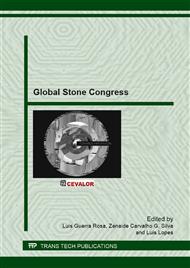p.124
p.135
p.141
p.147
p.157
p.173
p.183
p.189
p.197
Potential for Implementation of Environmental Management Systems & the EU Ecolabel in the Marble Sector
Abstract:
Marble is a financially important and highly versatile material used extensively in construction, decoration and art. The marble industry however is generated with low production efficiency, high waste material generation, high production costs and overall lack of sustainable resources management. A step towards improving the energy efficiency and environmental performance of the marble sector would be the adoption of ecological schemes that are already into force both at national and international levels. The most commonly used schemes are Environmental Management Systems that are focused on the general environmental performance of the enterprise, such as the EU EMAS (Eco-Management and Audit Scheme) and the international EN ISO 14001:2004 standard and ecolabelling schemes, such as the EU Ecolabel, focusing on specific products or services. The present work aims to provide a concise summary of the technical requirements and procedures for obtaining such environmental certificates, assess the current state of the art in terms of environmental performance of a typical marble plant and enhance the ecological awareness of the sector. A detailed analysis of the technical requirements for achieving EMAS III registration and obtaining the EU Ecolabel for hard floor coverings is presented and the potential for a typical SME marble industry for meeting the above requirements is quantified. Possible measures that may improve the overall environmental impact are proposed. It is further shown that the process of meeting the necessary criteria for obtaining the above certificates will also lead to the adoption of best engineering practices and the production of high added value products.
Info:
Periodical:
Pages:
157-170
Citation:
Online since:
April 2013
Authors:
Price:
Сopyright:
© 2013 Trans Tech Publications Ltd. All Rights Reserved
Share:
Citation:


